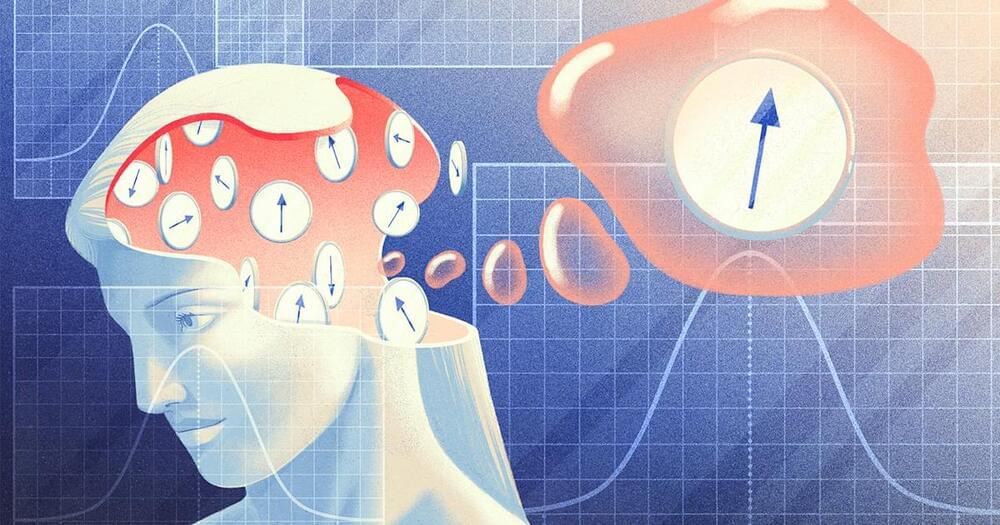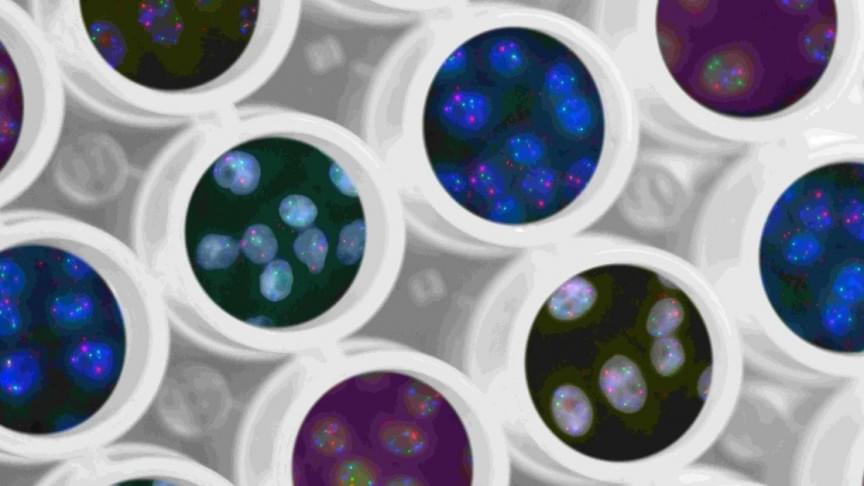In a quest to map out a quantum theory of gravity, researchers have used logical rules to calculate how much Einstein’s theory must change. The result matches string theory perfectly.



Scanning for Memories
At the time there was almost no evidence of this from neuron studies. But in 2006, Ma, Pouget and their colleagues at the University of Rochester presented strong evidence that populations of simulated neurons could perform optimal Bayesian inference calculations. Further work by Ma and other researchers over the past dozen years offered additional confirmations from electrophysiology and neuroimaging that the theory applies to vision by using machine learning programs called Bayesian decoders to analyze actual neural activity.
Neuroscientists have used decoders to predict what people are looking at from fMRI (functional magnetic resonance imaging) scans of their brains. The programs can be trained to find the links between a presented image and the pattern of blood flow and neural activity in the brain that results when people see it. Instead of making a single guess — that the subject is looking at an 85-degree angle, for instance — Bayesian decoders produce a probability distribution. The mean of the distribution represents the likeliest prediction of what the subject is looking at. The standard deviation, which describes the width of the distribution, is thought to reflect the subject’s uncertainty about the sight (is it 85 degrees or could it be 84 or 86?).

A team of engineers and neurosurgeons developed a state-of-the-art brain sensor that could greatly enhance the treatment of cancer and epilepsy, according to a press statement from the University of California San Diego.
The new apparatus can record electrical signals from the brain’s surface in a never-before-seen resolution for such a device.
The breakthrough opens up new possibilities for brain-computer interfaces, such as the ones being developed by Elon Musk’s Neuralink. Not only will this help to improve diagnoses of deadly diseases, it also has the potential to transform our understanding of the human brain.


And it took less than a full workday. Stanford Medicine scientists and their collaborators have engineered a new genome sequencing technique that can diagnose rare genetic diseases in an average of eight hours. This is a record-breaking time frame that is leap and bounds ahead of other current advanced technologies.
Gene sequencing is crucial to advancing science! Check out why cutting time and cost is key.

Could it really happen?Looks like Meta is swinging for the cheap seats.
Looks like Meta is swinging for the cheap seats.
The social media superpower Meta (formerly Facebook) has announced that it has built an “AI supercomputer” — an unconscionably fast computer designed to train and enhance machine-learning systems, according to a Monday post from Meta CEO Mark Zuckerberg.
“Meta has developed what we believe is the world’s fastest AI supercomputer,” said Zuckerberg in his post. “We’re calling it RSC for AI Research SuperCluster and it’ll be complete later this year.”

Four different measurement tools
Intrigued by the idea that the stone camels might constitute an artistic breakthrough, the aforementioned team of archaeologists — once again headed by Charloux, alongside archeologist Maria Guagnin — tried to see if they could assess their age not through stylistic comparisons but a “technological study” that yielded absolute results, using a variety of measurement tools to determine them.

No matter how big that number sounds, it isn’t much compared to standalone blockchain-based games. Axie Infinity, an NFT-focused video game developed on the Ethereum network, surpassed $1 billion in total trade volume in August 2021, perhaps the most prominent 30-day period in the history of NFTs.
With so much interest in NFTs, it’s only natural that developers have begun to develop the infrastructure necessary to handle what will undoubtedly become a massive secondary market for these assets. In addition, holders want real tangible benefits to holding NFTs, and in a crowded gaming market, new entrants need to differentiate to survive.
2022 is likely the year NFT games become more mainstream, especially now that many crypto investors own these assets. And real innovation, not just in NFTs but in gameplay and mechanics themselves, will be the driving force.

The photograph was captured by the probe’s WISPR (Wide-field Imager for Solar Probe) instrument when the spacecraft traveled at a distance of 16.9 million miles from the sun, inside our star’s corona.
The image shows distinct jets of solar material, dubbed coronal streamers, seen to the left/center of the image.
The bright spot you see in the above image is Mercury.